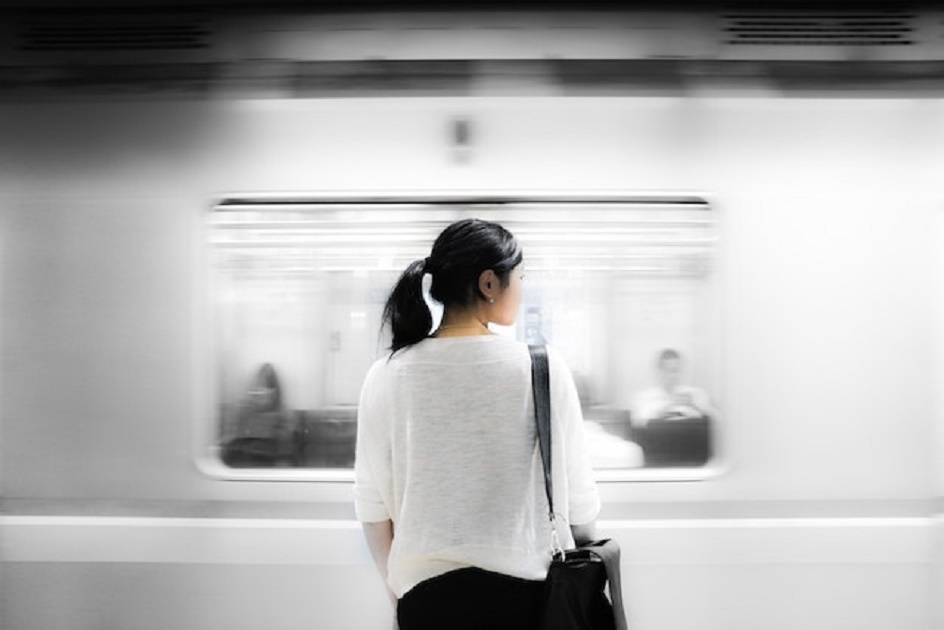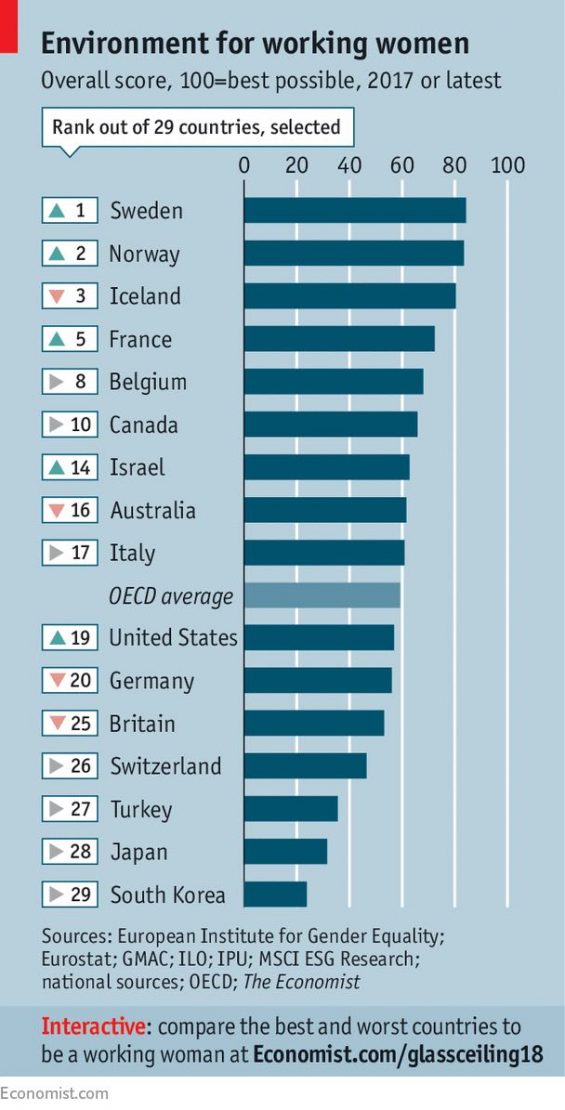Tokyo (SCCIJ) – In an annual assessment of where women have the best and worst chances of equal treatment at work in countries of the Organization for Economic Co-operation and Development (OECD), the disparity between countries in terms of workplace gender equality remains wide. According to The Economist’s 2018 glass-ceiling index (GCI), Switzerland and Japan are among the four worst countries in this regard. Contrastingly, the Nordic countries continue to do well with Sweden taking over from Iceland as the best place to be a working woman. The term “glass ceiling” refers to the fact that there is an invisible barrier for women to rise to the same workplace level as men.
Nordics best work places for women
The GCI, which combines data on higher education, labor force participation, pay, childcare costs, maternity and paternity rights, business school applications and representation in senior jobs to create a ranking of 29 OECD countries, shows that the Nordics are the best places to work if you are a woman. But some figures are still very bad: For example, the percentage of women on boards (OECD average) is still quite low at 21.8% and rose only by 1.3 points from last year.

Working woman in Japan
The United States of America under President Donald Trump rose from 20th to 19th place thanks in part to a higher female labor force participation rate, and more adult women with tertiary degrees. Germany fell from 19th to 20th place due to a lower share of women in its new parliament and those taking the GMAT business school entrance exam. Britain fell from 22nd to 25th place with fewer women attaining higher education.

Switzerland and Japan score low
Turkey, Japan, South Korea and Switzerland continue to be the worst four nations to be a working woman in The Economist’s Glass Ceiling Index 2018. Japan is ranked at #28, one rank above South Korea at the last place, and Switzerland at #26, one rank above Turkey. Here are the detailed figures for all ten indicators of the index for Japan and Switzerland:
Higher education: In Switzerland, women’s tertiary education attainment is 9.5 points lower than men’s. That is the highest gender gap in percentage points of all 29 countries in the index. In Japan, this figure is 0.3 points higher than men’s. This means rank #23 or six ranks better than Switzerland.
Labor force participation rate: In Switzerland, the participation rate for women is 8.7 points lower than men’s. Thus, Switzerland is No. 11 in the ranking. Japan is at No. 26 with the female labor participation rate being 17.3 points lower than men’s.
Gender wage gap: In Switzerland, women earn 16.9% less than men. That was rank 21 out of 29 countries. Japan has the second worst figure: Women earn 25.7% less than men in Japan.
Women in managerial positions: In Switzerland, women hold 35.9% of managerial positions. This equals a global #9. Japan’s figure of 13.0% is the second worst figure internationally.
Women on company boards: In Switzerland, women hold 21.3% of seats on boards (a global #17). Japan sits at the lowest end of the ranking with a rate of 5.3% of seats on company boards.
Childcare and paid work leave
GMAT exams taken by women: In Switzerland, 28.9% of GMAT exams are taken by women. This is the sixth worst score out of the 29 examined countries. Japan with 21.5% occupies again the last place in the ranking.
Women in parliament: In Switzerland, women hold 32.5% of seats in parliament. With a rank of No. 13, this is above the OECD average. Again, Japan holds the last place in the ranking with a female member rate in parliament of 10.1%.
Net childcare costs: In Switzerland, net childcare costs are 46.6% of the average wage. This causes the second worst score of 29 countries. In Japan, this rate is 20.9% which means rank #19.
Paid leave for mothers: In Switzerland, women get the equivalent of 7.9 weeks of paid maternity leave, the fourth lowest figure of all 29 index countries. Paid maternity leave in Japan is 35.8 weeks. This means rank #9 internationally.
Paid leave for fathers: Switzerland is among the eight index countries with no paid paternal leave. Paid leave for fathers is highest in Japan with 30.4 weeks. But almost no father in Japan actually uses this generous option.
This is the sixth year that The Economist has released its glass-ceiling index. When it was launched in 2013 there were five indicators and 26 countries; today it consists of ten indicators for 29 OECD countries.
You can compare more data and countries here.
Text: Martin Fritz for SCCIJ; Photo Top: Eutah Mizushima on Unsplash; Photo middle: The Economist





























